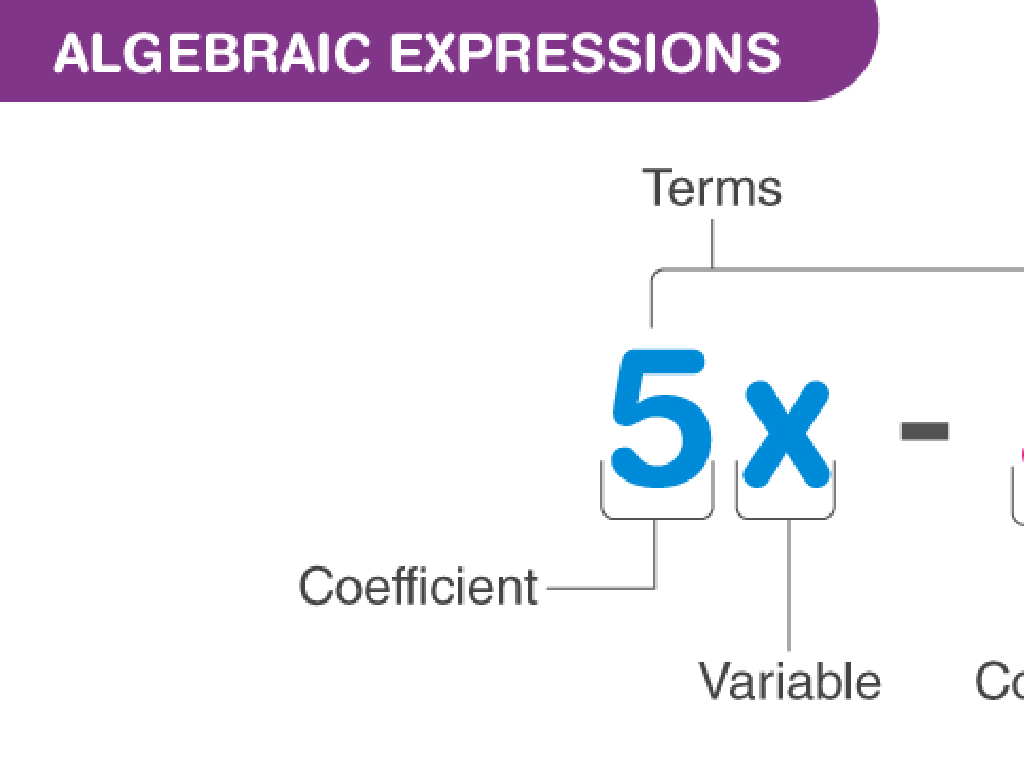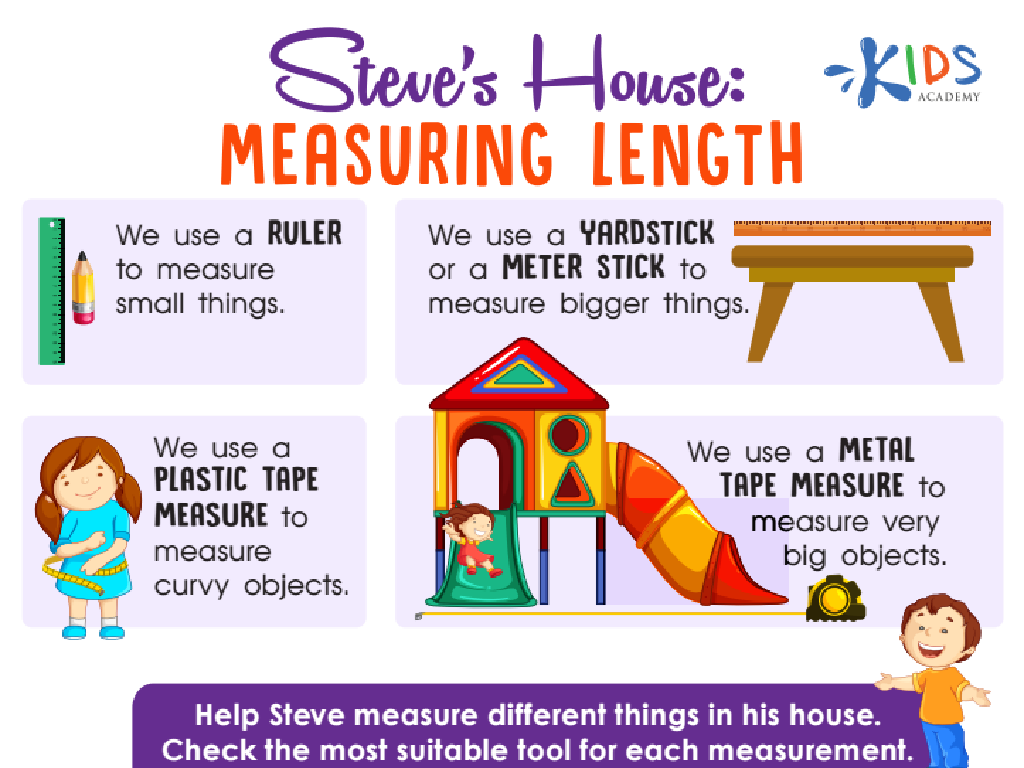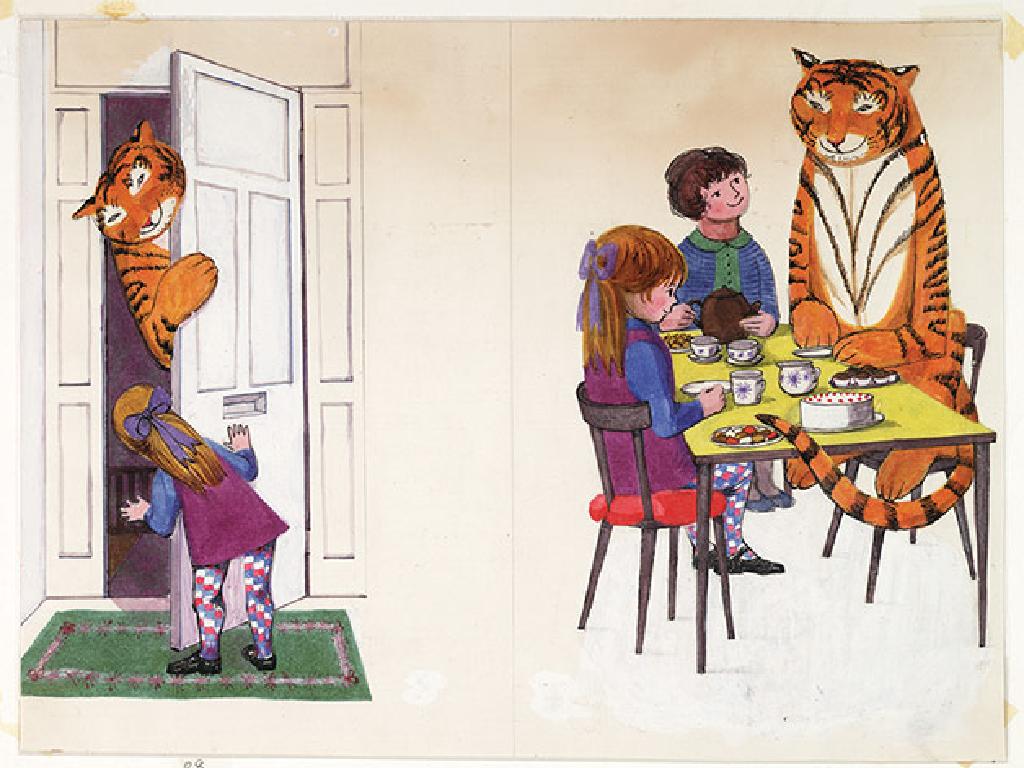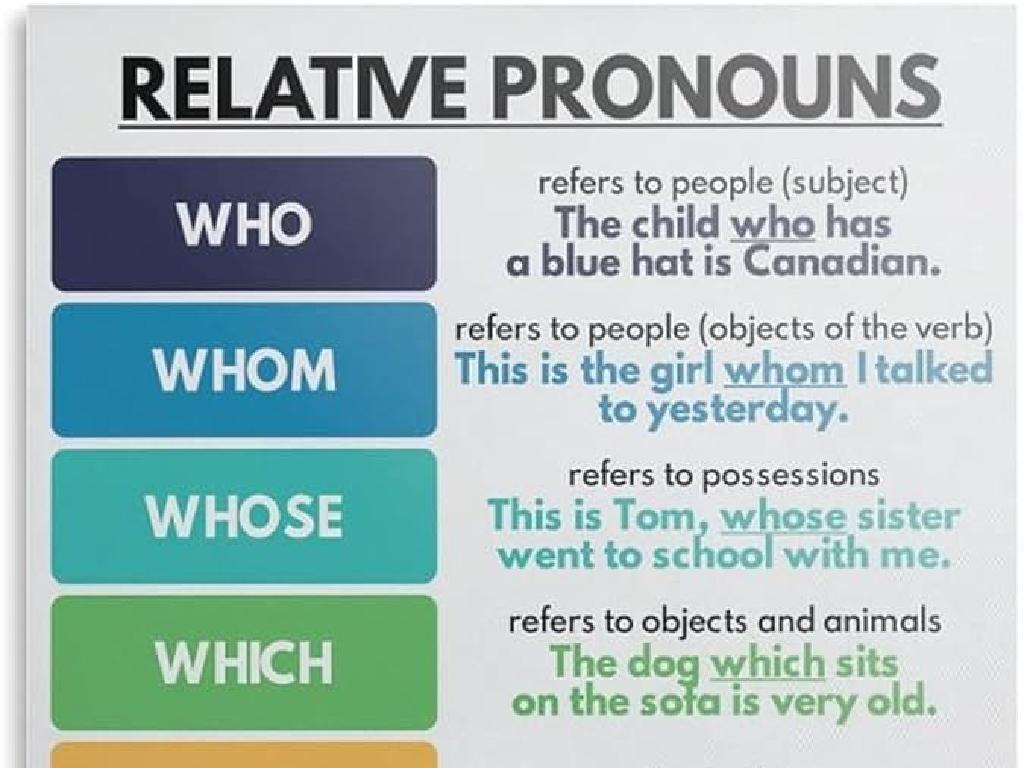Count On Frames - Up To 5
Subject: Math
Grade: Kindergarten
Topic: Counting To 5
Summary: In this engaging Kindergarten math lesson, students learn to count from 1 to 5 using interactive counting frames. Through hands-on practice with objects like beads and blocks, children visually and physically explore number order and quantity. The lesson includes fun group activities, counting aloud, and celebrating progress to reinforce early number concepts. It builds a strong foundation for number recognition and prepares students for future math success through playful learning.
Please LOG IN to download the presentation. Access is available to registered users only.
View More Content
Welcome to Counting Up to 5!
– Greet our little mathematicians
– Today’s goal: Count to 5
– Why counting matters
– Counting tells us the quantity of items
– Counting practice activity
– Use frames to count objects like toys or blocks
|
Begin the class with a warm welcome to engage the children and create a friendly learning environment. Introduce the objective of the day, which is to learn to count up to 5. Explain the importance of counting in simple terms, emphasizing that it helps us understand how many things we have, like toys or candies. For the activity, use counting frames with objects such as toys or blocks to visually demonstrate the concept of counting. Encourage the children to participate by counting aloud together and using their fingers to represent numbers. This interactive approach will help solidify their understanding of numbers and quantities.
Learning to Count with Frames
– What’s a counting frame?
– A tool to help us count items
– Counting frames have spaces
– Each space holds one object for counting
– Counting up to 5 with frames
– Place objects in each space and count aloud
– Practice counting together!
|
Introduce the counting frame as a simple tool that assists in counting objects by placing them in designated spaces. Explain that each space on the frame represents one number and is used to visually organize objects for easier counting. Demonstrate counting up to 5 using the frame by placing objects in each space and counting them aloud with the class. Encourage participation by having students practice with their own frames or a drawn representation on paper. Reinforce the concept by counting various items and ensuring each child understands that the last number counted represents the total number of objects.
Counting 1 to 5 with Frames
– Starting at number one
– ‘One’ is the first number we say
– Place one object in the frame
– Each slot holds one item, let’s fill the first one
– One is our counting starting point
– Remember, counting begins with the number one
|
This slide introduces the concept of counting from 1 to 5 using a frame. Begin by asking the students to say ‘one’ out loud to reinforce the auditory aspect of learning numbers. Then, visually demonstrate placing a single object into the first slot of the counting frame. Emphasize that ‘one’ is where we start counting, and it represents a single item or unit. Encourage the children to practice by placing objects in the frame themselves. This hands-on activity helps solidify the concept of ‘one’ and the sequential nature of counting. For children who grasp the concept quickly, challenge them to find one object in the classroom to bring to the counting frame.
Adding More to Our Frame
– Now let’s add another to make 2
– Say ‘two’ with me!
– We have two objects on our frame now
– Counting objects: 1, then add 1 more to make 2
– Two comes after one when we count
– Understanding order: after 1, we say 2
|
This slide is designed to help Kindergarten students understand the concept of counting and adding one more to a set. Start by showing them a frame with one object, then add another object to make two. Encourage the students to say ‘two’ out loud with you to reinforce the number’s pronunciation and to help them remember the sequence of numbers. Show them that two objects on the frame represent the number two. Explain that when we count, two always comes after one. Use physical objects like blocks or counters to visually demonstrate this concept. For the activity, have students practice adding one more object to a single object in their own frames and counting out loud. This hands-on activity will help solidify their understanding of counting and the order of numbers up to five.
Can We Count to 3?
– Counting up to three
– Adding one more to make three
– Start with two, then say ‘one, two, three’ as you add another
– Observing three objects
– Look at the frame with three items and count them
– Understanding the number three
– Three follows two and is before four in the number sequence
|
This slide is aimed at helping Kindergarten students understand the concept of counting to three using a frame with objects. Begin by engaging the students with the frame that already has two objects and then add one more to make three. Encourage the children to count aloud together ‘one, two, three’ as the third object is added. Highlight the frame with three objects and ask the students to count them individually. Explain that three is the number that comes after two. Use visual aids like a number line or fingers to show the sequence of numbers. This activity will reinforce their understanding of number order and counting.
Now, Let’s Count to 4!
– Adding one more makes four
– Say ‘four’ together
– Count four objects on the frame
– Look at the frame, let’s count: 1, 2, 3, and one more is 4!
– Four follows three
– Remember, four comes after three in the number line
|
This slide is designed to help Kindergarten students understand the concept of counting to four using a counting frame. Start by showing them a frame with three objects and then add one more to make four. Encourage the students to say ‘four’ out loud to reinforce the number’s name. Then, have them count the objects on the frame aloud with you. Emphasize that four is the number that comes after three, helping them to understand the sequence of numbers. Use real objects or images on the frame to make counting tangible. For an activity, you can provide students with their own frames and objects to practice counting to four. This hands-on experience will help solidify their understanding of the number four.
Finally, Counting to 5!
– Counting up to the number five
– Fill the frame with five items
– Place objects one by one, counting aloud
– Five equals all fingers on one hand
– Hold up one hand and count each finger
– Celebrate learning to count to five!
|
This slide is designed to reinforce the concept of counting to five for Kindergarten students. Start by encouraging the children to count aloud up to five. Use a frame and have them place objects into it one by one, counting each object as they go, until they reach five. Highlight that five is a special number because it’s the same as the number of fingers on one hand. Have the children hold up a hand and count each finger. This visual and physical representation helps solidify the concept. End the lesson with a fun celebration to acknowledge their accomplishment in learning to count to five. For the activity, consider having different sets of objects for the children to count, such as blocks, stickers, or toy animals, to keep the activity engaging and interactive.
Let’s Practice Counting Together!
– Use your counting frame
– Count as a class from 1 to 5
– We’ll do it together, starting at 1 and ending at 5
– Everyone gets a turn
– Each student will count out loud with the frame
– Practice makes perfect!
|
This slide is designed for a class activity where students will practice counting to 5 using counting frames. The teacher will guide the class through the activity, ensuring that each student understands how to use the counting frame. Start by demonstrating how to count from 1 to 5 using the frame. Then, as a class, count out loud together. Make sure to give each student the opportunity to count individually, which will help build their confidence and reinforce their understanding of the numbers. Encourage the students and provide positive feedback to make the learning experience enjoyable. If time allows, consider rotating the counting frames among students for repeated practice, or pair students up to teach each other.
Class Activity: Counting Fun with Frames!
– Let’s fill frames with objects
– Use colorful beads for counting
– Can you count all the beads to 5?
– Place beads in the frame, counting out loud
– Show your filled frame to the class
– Share your counting skills with friends
|
This activity is designed to help Kindergarten students practice counting to 5 in a fun and interactive way. Provide each student with a frame and a small collection of colorful beads. Instruct them to place the beads in the frame one by one, counting each bead aloud as they do so. This will help reinforce their understanding of numbers and counting sequences. Once they have filled their frame with five beads, ask them to count the total number of beads to confirm they have five. Encourage students to show their filled frames to the class and share their counting experience. Possible variations of the activity could include using different objects like stickers or buttons, counting in pairs, or filling multiple frames if time allows.
Great Job Counting!
– Counting frames success
– Counting’s daily importance
– Counting helps with tasks like sharing toys
– Celebrate learning to count
– A big clap for everyone!
– Ready for more counting fun
– What comes after 5? Let’s find out!
|
This slide is a celebration and reinforcement of the students’ success with counting frames up to 5. Emphasize the importance of counting in everyday life, such as determining the number of items needed or sharing equally among friends. Encourage the children to feel proud of their accomplishment by clapping for themselves, fostering a positive learning environment. As a follow-up, prompt the students to think about what numbers come after 5, setting the stage for continued learning and curiosity in counting.





